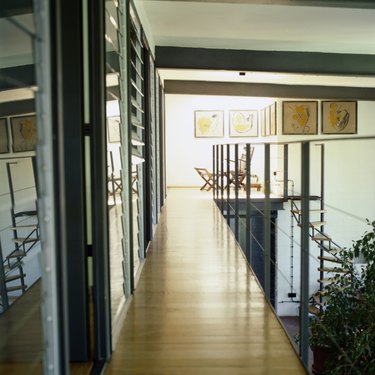
A home loft is generally designed to be an open space with little to no thought given to soundproofing. The issue of soundproofing can arise if the space is transformed into a home office, bedroom, study area or home music studio. Controlling the transmission of sound both in and out of a loft space may require some creative techniques.
Walls
Video of the Day
Enclosing the space will cut down on sound transmission and provide a basic level of soundproofing. To increase the effectiveness of new walls, add insulation or acoustical foam during the construction. For home music studio uses, consider acoustic spacers between the studs and wall covering. Acoustical tiles or foam can be used on new and existing walls to further enhance soundproofing.
Video of the Day
Floor
Impact noise is generated when you walk or move something on a floor. Loft floors can transmit impact noise into the lower space and allow sound from below into the loft. Wood floors can be carpeted to reduce impact noise and cover gaps in the flooring. Various grades of padding can help determine the level of soundproofing the new flooring can provide. Acoustic soundboard can be installed on top of or underneath wood flooring to reduce impact noise.
Windows and Doors
Windows and doors can transmit sound in and out of the loft space. Replace older, single-pane windows with double-pane or storm windows to reduce the level of outside noise. Insulating weather stripping or self-sealing door jambs can help soundproof interior doors. For a home music studio, consider installing two entrance doors separated by a short hallway. This dead air space can offer significant soundproofing benefits.
Ceiling
Loft ceilings are often left unfinished with exposed rafters. If this is the case, add blanket or spray foam insulation to the ceiling space for immediate soundproofing results. Add drywall or other material to cover the ceiling to increase the level of sound reduction. Installing a suspended tile ceiling with blanket insulation can also provide loft soundproofing. For home music studio uses, adding acoustical foam sections to the ceiling can alter the shape of the room and reduce how sound travels around and out of the loft.